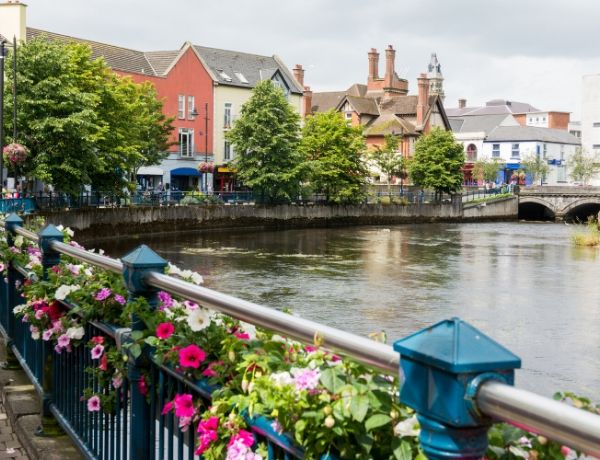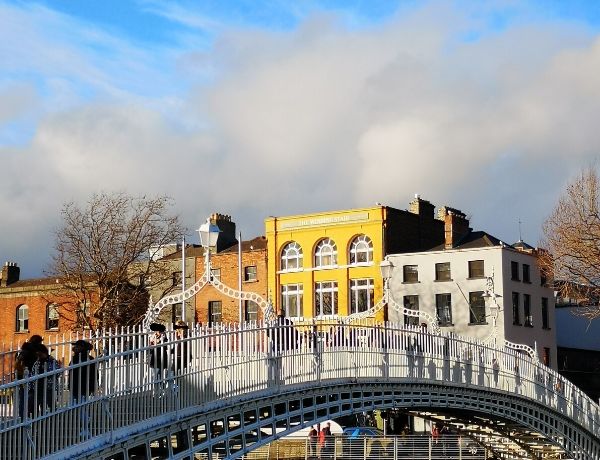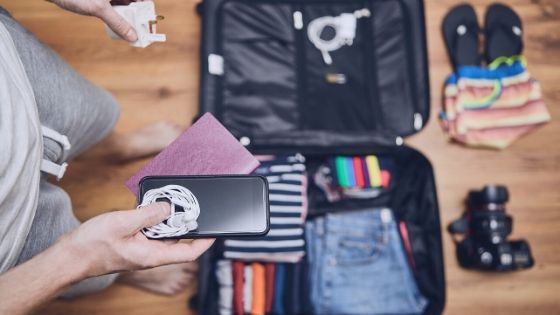
What to pack for Ireland in March: full packing list
What to pack for Ireland in March: full packing list, travel essentials and what to wear in Ireland in March to stay warm and stylish at the end of winter
March is a transitional month in Ireland, the time of the year when winter starts to slowly (slowly) dissipate and leave space for slightly milder temperatures.
Still very much a cold month, this is the time for the timid appearance of the first blossoms, a time for short morning hikes and the moment when locals start putting away their warmer coats and start chancing slightly lighter ones, especially during the central hours of the day.
While still way too cold for leather jackets, March in Ireland often allows you to lose the hats and gloves although I still recommend you carry them with you: this is the type of month when one day is mild and one freezing cold so being prepared for all eventuality is a must!
This is my complete, tried and tested packing list for Ireland in March.
This post contains affiliate links. Should you make a purchase through them, we might make a small commission at no extra cost to you.
As an Amazon Associate, I earn from qualifying purchases
What to pack for Ireland in March: essentials
I am going to start this packing list with essentials for all seasons and then drill down on the specifics for the month of March.
Documents
- Passport and Visa if required (find Visa requirements for Ireland here)
- Driving Licence
- International driving license if needed (check here Ireland’s driving requirements for foreigner)
- Kids birth certificate and authorization to travel letter of the child’s guardian should be traveling to Ireland alone with a child with a different surname as your
- Medication and prescriptions for ongoing conditions/ needs
- A print out of your reservations (cars, hotels, tours etc)
Does it snow in Ireland in March? March may bring snow in Ireland, especially on the mountains and away from the city (snow in Dublin happens but tends to be rare). Most likely, you won’t need full snow gear when it comes to your clothing but you may well need snow chains for your tires. (However, I recommend you do not drive up the mountains if there is any risk of snow!). Check with your car rental agency what they provide.
Medications and toiletries
- A well-stocked first-aid kit
- Moisturizing cream for face/hands with UV protection (the wind and cold can be intense here)
- Allergy cream/medications if needed
- Paracetamol or similar for pain/fever
- Any prescriptions and ongoing medications you are used to taking at home + the generic name of the active principle should you need to stock up. Commercial names in Ireland are often different than back home
Need to know: paracetamol is widely available in Ireland in supermarkets and pharmacies but there are rules on how much you can buy within the same transaction. If you think you will need more than a couple of boxes, plan ahead or bring a backup one from home.
All your basic toiletries including:
- Body wash/shampoo/conditioner
- Dental kit with toothbrush/toothpaste/floss
- Deodorant
- Tweezers
- Shaving cream/blade
- Women sanitary supplies
- Brush/comb/detangler
- Hair ties
- Moisturizing cream for face /body
- Nail clipper
- Makeup if using
What to wear in Ireland in March
Official weather statistics say that Ireland in March say that
- The average temperature in Ireland in March is 7C/45F
- The average number of rainy days in Ireland in March is 24
This is what I recommend you pack for Ireland in March:
- Rain resistant winter jacket, with hood.
- Scarf, hat and gloves
- Long sleeve tops
- A thermal underlay (top only is enough)
- Woolen cardigan/sweater
- Long pants/ jeans
- Tights if planning on wearing a skirt/dress
- Good walking shoes such as sneakers/runners/ankle boots
- Underwear and socks
- Pajama/nightwear
- Swimsuit and flip flops only if planning on staying in a spa hotel
- Kids rain gear (rain pants or rain suit, ideally wellington boots)
- A nicer outfit if staying in a castle / high-end hotel
What to wear in Ireland in March for a stay in a castle: If staying in a castle, make sure you abide by the dress code, often enforced in the castle restaurants for evening meals. Information for each is available on the website of the structure in question, however, usually, this means shirt/tie/suit for men, no sneakers and no denim for both men and women.
What to wear in Ireland in March for the St Patrick’s Day Parade
St Patrick’s Day Parades are fun in Ireland, especially in smaller centers, when they truly feel like a community event.
There is not dress code for them however, to feel part of the celebrations it is nice to have something green (even just a scarf) and it is paramount to dress warm. Despite the crowds, staying outside for hours is likely to make you really cold: a thermal layer is often a good idea and comfortable shoes a must!
What to pack for Ireland in March: tech and gadgets
- Phone with good roaming plan or local sim card
- Hands-free phone holder for car
- Power bank / extra battery pack for charging all your tech
- USB cables
- Ireland travel adapter (3 pins)
- Tablet/kindle if using
- Camera, if separate from the phone
- Wind resistant travel umbrella
Luggage and bags
You don’t need all of this however, I recommend you choose your bags for Ireland wisely so you don’t’ find yourself awkwardly dragging stuff around!
- Hard-shell luggage if driving (super handy to stack in the trunk of the car)
- Travel backpack if traveling light / using the bus or train
- Reusable tote bag for grocery shopping / extra bits
- Wet/dry bags especially if traveling with young kids
- Packing cubes (this stuff is magical, they pretty much double the space in your luggage)
What to pack for the kids
- Safe and Ireland authorities approved car seat (official rules here)
- Kids travel pillow for the plane/car
- Well stocked changing bag
- An all-terrain stroller for walks in the countryside
- A baby carrier
- Stroller cover/sleeping bag
- Winter bodysuits for long days out
- Rain cover for stroller
- Rain gear for toddlers, such as rainproof pants and rain boots for puddles/mucky terrain.
You usually do not need to carry your own high chair or toddler crib: Ireland hotels and restaurants tend to be well equipped and, most of the time, will be able to provide what you need. If staying in smaller properties and B&Bs, ask for a cot in advance to make sure they have one available on your dates.
I hope you found this packing list for Ireland in March useful. Safe travels!




